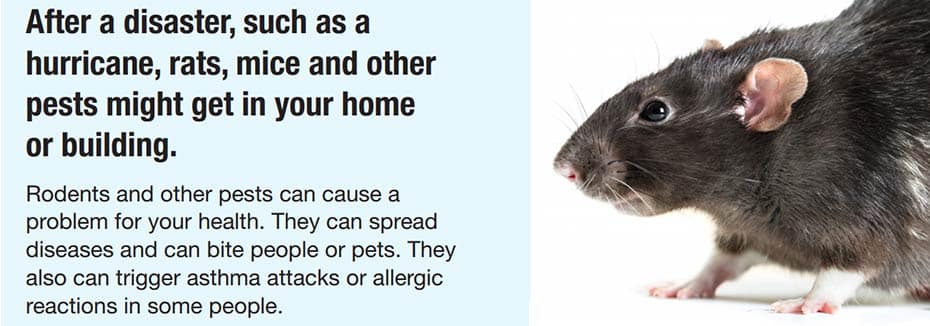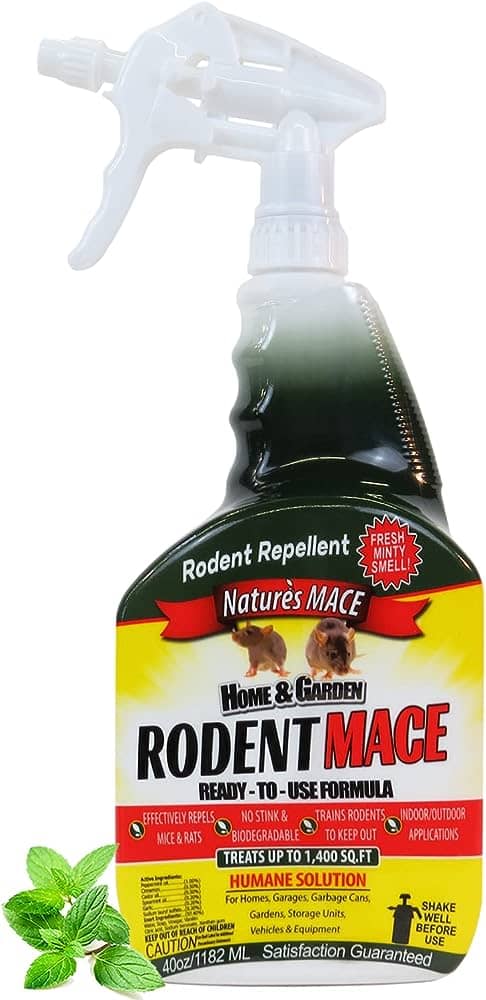To prevent mouse infestation in your home, follow these essential steps. This article will discuss effective measures to keep mice away and protect your home and belongings.
Taking these preventive measures will help you maintain a clean and pest-free environment. Mice infestations can cause numerous problems in your home, including damage to property, contamination of food, and the spread of diseases. By implementing the right steps, you can prevent mice from entering your home and eliminate any existing infestations.
Firstly, it is important to seal all entry points, such as gaps, cracks, and holes, in your home’s exterior. Mice can squeeze through even the smallest openings, so thorough inspection and sealing are crucial. Secondly, keep your home clean and tidy, regularly removing food and water sources that can attract mice. Properly storing food in sealed containers and promptly cleaning up spills will help minimize their attraction. Additionally, consider using deterrents such as peppermint oil or ultrasonic devices to repel mice. With these essential steps, you can effectively prevent mouse infestation in your home and maintain a healthy living environment for you and your family.
Identifying Signs Of Mouse Infestation
Prevent mouse infestation with these essential steps: easily identify signs of mouse presence in your home and take immediate action. Create a clean and clutter-free environment, seal any entry points, store food properly, use mouse traps or repellents, and maintain regular maintenance.
Recognizing Droppings And Gnaw Marks:
- Look for small, dark droppings scattered throughout your home, especially in hidden corners and behind appliances. Mouse droppings are typically elongated and resemble grains of rice.
- Check for gnaw marks on furniture, baseboards, and walls. Mice have a habit of chewing on various materials to sharpen their teeth, leaving behind noticeable bite marks.
Spotting Urine Stains And A Musky Odor:
- Keep an eye out for urine stains on floors, walls, and areas where mice frequent. These stains appear as small, dark spots and may emit a strong, pungent odor.
- Pay attention to any noticeable musky smell in your home. Mice tend to leave behind a distinct scent, especially in enclosed spaces.
Noticing Chewed Wires And Insulation:
- Inspect electrical wires for signs of damage. Mice have a tendency to chew on wires, which can pose a serious fire hazard if left unchecked.
- Look for chewed insulation in attics, crawlspaces, and other areas where mice may nest. Damaged insulation can compromise your home’s energy efficiency.
By familiarizing yourself with these telltale signs, you can quickly identify if you have a mouse infestation in your home. Taking prompt action is crucial to prevent further damage and ensure the health and safety of your household.
Sealing Entry Points
Prevent mouse infestation in your home by sealing entry points. By blocking potential openings, you can effectively keep mice out and maintain a pest-free environment.
Mouse infestation can be a major concern for homeowners, but there are steps you can take to prevent these pests from invading your space. One effective method is to seal the entry points that mice often use to gain access to your home.
By eliminating these openings, you can significantly reduce the risk of an infestation. Here are a few essential steps to help you seal entry points effectively:
Inspecting Exterior Walls, Windows, And Doors:
- Regularly inspect the exterior of your home, paying particular attention to walls, windows, and doors.
- Look for any cracks, gaps, or holes that could serve as potential entry points for mice.
- Check the condition of window screens and door frames, ensuring that they are intact and free of damage.
- Evaluate the quality of weather stripping and caulking around windows and doors, replacing any worn or ineffective materials.
Using Weatherstripping And Door Sweeps:
- Install weatherstripping around windows and doors to create a tight seal that mice cannot penetrate.
- Consider using door sweeps on exterior doors to eliminate gaps at the bottom, preventing mice from sneaking in.
- Choose high-quality weatherstripping and door sweeps that provide durability and long-lasting protection against rodent intrusion.
Sealing Cracks And Gaps With Steel Wool And Caulk:
- Use steel wool to fill small cracks and gaps in your home’s exterior, as mice are unable to chew through this material.
- Apply caulk to seal larger openings, ensuring a secure barrier against mouse entry.
- Pay close attention to areas where utility pipes enter your home, as these are common entry points for rodents.
By inspecting exterior walls, windows, and doors, using weatherstripping and door sweeps, and sealing cracks and gaps with steel wool and caulk, you can effectively seal entry points and minimize the risk of a mouse infestation in your home. Stay vigilant and take proactive measures to maintain a pest-free environment.
Removing Attractants And Food Sources
Preventing mouse infestation starts with removing attractants and food sources from your home. By ensuring there are no accessible food crumbs or open containers, you can deter mice from entering and nesting in your living space.
:
Keeping your home free from mouse infestation requires diligent efforts to remove any attractants and potential sources of food. By following these essential steps, you can minimize the chances of mice entering and nesting in your living space:
- Storing food in airtight containers: To deter mice from invading your pantry and kitchen, it is crucial to store all food items in airtight containers. This prevents the enticing aroma of food from spreading and reaching their sensitive noses. Additionally, make sure to seal any small openings in food packaging with clips or rubber bands to further discourage mice from accessing your food.
- Cleaning up spills and crumbs promptly: Mice are opportunistic feeders, and even the tiniest crumbs or spilled food can attract them. To deprive them of these food sources, make it a habit to promptly clean up any spills or crumbs in your home. Pay special attention to the kitchen area, dining table, and other spots where food is consumed. Regular vacuuming and sweeping will help eliminate potential food temptations for mice.
- Securing garbage cans with tight-fitting lids: Mice are resourceful scavengers, and your trash can be their treasure trove. Prevent them from accessing your garbage by securing cans with tight-fitting lids. Regularly empty and dispose of the trash bags, ensuring that they are tightly sealed. It is also wise to keep garbage cans away from your home’s entry points to diminish the chances of mice discovering their way in.
By implementing these measures and consistently practicing good hygiene habits, you will significantly reduce the likelihood of a mouse infestation in your home. Remember, prevention is key, and a clean and mouse-free living environment is the ultimate goal.
Eliminating Indoor Nesting Spots
Prevent mouse infestation by eliminating indoor nesting spots. Take essential steps to safeguard your home from these unwelcome critters.
Having a mouse infestation in your home can be both unsightly and unhygienic. Preventing these pests starts with eliminating their indoor nesting spots. Here are some essential steps you can take to keep mice out of your living spaces:
- Decluttering storage areas and basements: Mice love hiding in cluttered areas, such as storage rooms and basements. By decluttering these spaces, you minimize potential nesting spots for rodents. Dispose of any unnecessary items and organize the remaining ones properly.
- Organizing items in plastic bins: Opt for plastic storage bins to organize your belongings. Mice can easily chew through cardboard boxes, providing them with a cozy nesting area. Plastic bins are much more secure and will prevent mice from accessing your belongings.
- Sealing gaps in walls and floors: Mice can enter your home through even the tiniest openings. Inspect your walls and floors for any gaps or cracks and seal them up. Pay close attention to areas near pipes, vents, and utility entries, as these are common entry points for rodents.
By following these essential steps, you can significantly reduce the risk of a mouse infestation in your home. Remember to keep your living spaces clean and tidy, and regularly inspect and maintain the integrity of your walls and floors to keep these unwanted guests out.
Using Mouse Traps And Repellents
Prevent mouse infestation in your home with essential steps like using mouse traps and repellents for effective control. These methods help to keep your living space rodent-free and maintain a hygienic environment.
Placing Snap Traps In High Mouse Activity Areas
- Snap traps are a traditional and effective method for catching mice in your home. Here are the essential steps to place them properly:
- Identify areas of high mouse activity, such as dark corners, behind furniture, and along walls.
- Set the snap trap perpendicular to the wall, as mice typically run along the edges.
- Apply bait, such as peanut butter or cheese, to the trigger mechanism.
- Ensure that the trigger is sensitive and easily triggered by the slightest touch.
- Place multiple traps about 5-10 feet apart to increase the chances of catching mice.
- Check the traps regularly and remove any captured mice promptly.
- Continue trapping until signs of mouse activity cease.
Choosing Humane Catch-And-Release Traps
- If you prefer a more humane approach to dealing with mice, catch-and-release traps are a great option. Follow these steps to choose and use them appropriately:
- Research different catch-and-release traps, considering factors such as size, material, and ease of use.
- Select a trap suitable for mice, ensuring that they cannot escape once caught.
- Place the trap in areas where mouse activity is evident, such as near droppings or gnaw marks.
- Use bait, such as chocolate or fruit, to entice the mice into the trap.
- Check the trap regularly to avoid causing unnecessary stress or harm to the captured mice.
- Once caught, carefully transport the mice to a suitable release location, preferably at least a mile away from your home.
- Release the mice gently and ensure they have a chance to find shelter and food in their new environment.
Applying Natural Repellents Like Peppermint Oil
- Natural repellents can help deter mice from entering your home. Peppermint oil, in particular, is known to be effective. Here’s how to apply it properly:
- Mix 10-15 drops of peppermint essential oil with water in a spray bottle.
- Shake the bottle well to ensure the oil is evenly distributed in the water.
- Identify areas where mice are likely to enter or frequent, such as cracks, gaps, or holes.
- Spray the peppermint oil solution along these entry points, creating a barrier mice are reluctant to cross.
- Refresh the application every few weeks or as needed, as the scent gradually fades.
- Consider using cotton balls soaked in peppermint oil and placing them strategically around your home for added protection.
- Combine the use of peppermint oil with other natural repellents, such as cloves, cinnamon, or vinegar, for enhanced effectiveness.
Remember that using a combination of traps and repellents is often the most efficient way to prevent mouse infestation in your home. Experiment with different methods, and always be proactive in maintaining a clean and clutter-free environment to minimize attractants for mice.

Credit: www.homedepot.com
Regular Cleaning And Maintenance
Regular cleaning and maintenance are essential steps to prevent mouse infestation in your home. By keeping your living spaces clean and tidy, regularly inspecting for entry points, and implementing preventive measures, you can effectively safeguard your home from unwanted rodent guests.
Keeping your home clean and well-maintained is essential to prevent a mouse infestation. Regular cleaning not only eliminates food and water sources that attract mice but also disrupts their nesting sites. By following these steps, you can significantly reduce the risk of a mouse infestation:
Vacuuming Floors And Upholstered Furniture Regularly:
- Vacuum your floors and rugs at least once a week to remove crumbs, food particles, and other potential mouse food sources.
- Pay special attention to areas under furniture, as mice often seek shelter and food there.
- Use a vacuum cleaner with a HEPA filter to trap and remove dander and droppings that can trigger allergies or spread harmful bacteria.
Cleaning Kitchen Appliances And Countertops Thoroughly:
- Wipe down kitchen appliances, such as toasters, microwaves, and blenders, regularly to remove any food residue.
- Clean countertops and sweep up any crumbs or spills that may attract mice.
- Store food in airtight containers, both in your pantry and on countertops, to minimize accessible food sources for mice.
Inspecting And Discarding Old Newspapers And Cardboard:
- Regularly inspect your home for old newspapers, magazines, or cardboard boxes that are no longer needed.
- Mice can use these materials to build nests, so it’s important to dispose of them properly.
- Consider opting for digital subscriptions or recycling old newspapers to reduce the risk of attracting unwanted furry visitors.
By incorporating these regular cleaning and maintenance practices into your routine, you can significantly reduce the likelihood of a mouse infestation in your home. Take proactive steps to eliminate potential food sources and nesting sites to keep your living space mouse-free.
Seeking Professional Pest Control Services
Prevent mouse infestation in your home with professional pest control services. Take essential steps to keep your home safe and pest-free.
If you have tried DIY methods to get rid of mice in your home but still find yourself dealing with an infestation, it may be time to seek the expertise of a licensed pest control company. Consulting with professionals can help you assess the severity of the infestation and implement appropriate extermination measures.
Here are some essential steps to consider:
- Consulting with a licensed pest control company: Reach out to a reputable pest control company to discuss your mouse infestation. A professional will have the knowledge and experience to understand the problem and provide effective solutions.
- Assessing the severity of the infestation: Pest control experts will thoroughly assess your home to determine the extent of the mouse infestation. They will identify key areas where mice are entering your property and nesting, allowing them to create a targeted plan of action.
- Implementing appropriate extermination measures: Once the severity of the infestation is determined, pest control professionals will employ the most suitable extermination methods. This may include setting traps, utilizing bait stations, or using eco-friendly rodenticides. They will also seal off entry points to prevent further infiltration.
By seeking professional pest control services, you can ensure that your mouse infestation is effectively handled. Remember, a licensed pest control company is equipped with the proper knowledge, tools, and techniques to not only eliminate existing mice but also prevent future infestations.
Frequently Asked Questions On Essential Steps To Prevent Mouse Infestation In Your Home
What Can You Do To Prevent Mice From Getting In Your House?
Seal any openings and cracks, keep food tightly sealed, remove clutter, and use traps or repellents.
How Do You Stop Mice Once And For All?
To stop mice for good, here are effective methods: 1. Seal all possible entry points with steel wool or caulk. 2. Keep a clean and clutter-free environment to remove potential nesting areas. 3. Store food in airtight containers and clean up spills promptly.
4. Set traps or use natural repellents like peppermint oil or mothballs to deter mice.
What Is The Most Effective Mouse Control Method?
The most effective method to control mice is by using traps or bait stations.
How Can I Prevent A Mouse Infestation In My Home?
To prevent a mouse infestation, keep your home clean and clutter-free, seal any cracks or holes in your walls and floors, store food in airtight containers, and use mouse traps or repellents as needed. Regularly check for signs of mice, such as droppings or gnaw marks, and address any issues promptly.
Conclusion
Taking proactive measures to prevent mouse infestation in your home is crucial for maintaining a safe and healthy living environment. By following the essential steps outlined in this blog post, you can significantly reduce the chances of mice entering your home and causing damage.
Start by sealing off any potential entry points, such as cracks and gaps in the walls, floors, and doors. Keep your home clean and free of food debris, store your food in airtight containers, and regularly empty your garbage bins.
Utilizing traps and baits can also be effective in eliminating any existing mice and preventing future infestations. Remember to monitor your home regularly and address any signs of mouse activity promptly. With these preventive measures in place, you can enjoy a mouse-free home and the peace of mind that comes with it.




